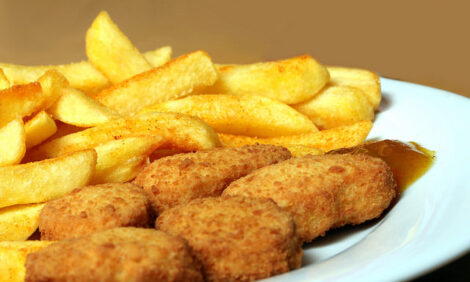



International Egg and Poultry Review
By the USDA's Agricultural Marketing Service - This is a weekly report looking at international developments concerning the poultry industry, this week looking at the Poultry and Egg Industry in the Philippines
The Poultry and Egg Industry in the Philippines
Poultry production has climbed steadily in the past few years. The
broiler industry was projected to expand nearly 4 percent in 2004 due
to the growing domestic and regional demand for domestic chicken
meat. In 2004 poultry accounted for 15.57 percent of farm production.
Chicken production was up 3.62 percent due to increased production
from commercial farms; however, duck meat production was down
1.32 percent due to a decline in the number of culled layers. Duck
production is constrained by continuous inbreeding which has led to
lower productivity. Expansion in the poultry sector is constrained by the
high cost of feed, inefficient marketing, and a lack of organization within
the industry. In 2004, the Philippine chicken inventory was 59.6 percent
native/backyard chickens, 25.8 percent broiler chickens and 14.6
percent layer chickens.
Philippines Poultry Imports
Poultry meat imports were up 26.4 percent
to 26,670 MT in 2004. The U.S. supplies nearly half of all Philippine
chicken imports and Canada supplies 42 percent. The U.S. is also a
major supplier of chicken sausages to the Philippines.
Competition for the Philippine market is expected from the ASEAN
countries. The Department of Agriculture has accredited 24 Brazilian
and 3 Chinese meat establishments to export poultry meat products to
the Philippines. ASEAN membership will boost Southeast Asia
countries’ competitiveness, especially for Thailand and Malaysia, by
reducing tariffs under its regional free trade plan. The ASEAN countries
are: Indonesia, Malaysia, Philippines, Singapore, Thailand, Brunei
Darussalam, Vietnam, Laos, Myanmar and Cambodia.
Philippines Poultry Exports The Philippines is one of the few countries
in Asia that has remained free of Highly Pathogenic Avian Influenza.
The poultry industry has taken the opportunity to increase exports,
especially to Japan. Poultry product exports to Japan totaled 1,500
metric tons 2004. The EU’s ban on poultry from several Asian nations
could provide an opportunity for the Philippines to sell product into in
that region. Several broiler companies are seeking certification for
Hazard Analysis Critical Control Point (HACCP) with the National Meat
Inspection Council.
Chicken and Duck Eggs
Chicken egg production was up 7.92 percent,
due to improved egg-laying efficiency and the increased number of
laying flocks. An increase in the number of duck layers in commercial
farms led to a 4.7 percent higher duck egg output.
In 2004 shell egg imports totaled 600 MT, up 27 percent compared to
the previous year. Imports of egg products grew from 592.6 MT in 1998
to 1,560.5 MT in 2002, an increase of 163.3 percent. Egg producers are
exploring the possibility of exporting egg products. The Netherlands
government is proposing a grant for the Philippine Egg Board to
purchase an egg processor that could produce egg products for
domestic institutional use and for export markets.
The Autonomous Region in Muslim Mindanao
In 1996 the Philippine
Government signed a peace pact in Mindanao with the Moro National
Liberation Front (MNLF), a Muslim group that had resorted to a war for
independence in the 1970s. Mindanao is the southernmost island in
the Philippines.
The peace pact granted a certain degree of autonomy to an area known
as the Autonomous Region in Muslim Mindanao (ARMM). The ARMM
includes the provinces of Maguindanao, Lanao del Sur and the Tawi-
Tawi, Sulu, and Basilan provinces in the Sulu Archipelago. Tawi-Tawi is
only 18 nautical miles from Malaysia, and very close to Indonesia and
Brunei.
The Philippines is seeking to turn Mindanao into a jump-off point for
exports to the Middle East. Indonesia and Malaysia have consulates in
Davao City, Mindanao and Brunei plans to open a consulate in Davao.
Brunei Darussalam officials have agreed to assist the Philippines in
getting halal certification. Halal certification would allow Philippine
poultry product exports to the global halal market. The Department of
Trade and Industry has sought to turn the Southern Mindanao into a
Halal Food Production Area. In the wake of the Asian tsunami last
December, Philippine hala food exports are expected to double this to
about $100 million.
Source: Philippine Bureau of Agricultural Statistics, Philippine
Department of Foreign Affairs, United Nations Food and Agriculture
Organization, CIA World Factbook, USDA/Foreign Agricultural Service,
news wires
To view the full report, including tables please click here
Source: USDA's Agricultural Marketing Service - 15th March 2005








